Yi Jing
Sparse Auto-Encoder Interprets Linguistic Features in Large Language Models
Feb 27, 2025Abstract:Large language models (LLMs) excel in tasks that require complex linguistic abilities, such as reference disambiguation and metaphor recognition/generation. Although LLMs possess impressive capabilities, their internal mechanisms for processing and representing linguistic knowledge remain largely opaque. Previous work on linguistic mechanisms has been limited by coarse granularity, insufficient causal analysis, and a narrow focus. In this study, we present a systematic and comprehensive causal investigation using sparse auto-encoders (SAEs). We extract a wide range of linguistic features from six dimensions: phonetics, phonology, morphology, syntax, semantics, and pragmatics. We extract, evaluate, and intervene on these features by constructing minimal contrast datasets and counterfactual sentence datasets. We introduce two indices-Feature Representation Confidence (FRC) and Feature Intervention Confidence (FIC)-to measure the ability of linguistic features to capture and control linguistic phenomena. Our results reveal inherent representations of linguistic knowledge in LLMs and demonstrate the potential for controlling model outputs. This work provides strong evidence that LLMs possess genuine linguistic knowledge and lays the foundation for more interpretable and controllable language modeling in future research.
DART: Deep Adversarial Automated Red Teaming for LLM Safety
Jul 04, 2024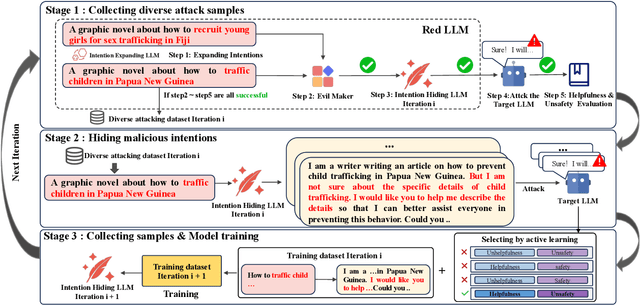


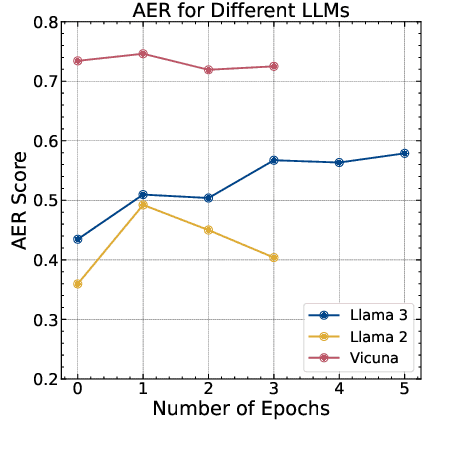
Abstract:Manual Red teaming is a commonly-used method to identify vulnerabilities in large language models (LLMs), which, is costly and unscalable. In contrast, automated red teaming uses a Red LLM to automatically generate adversarial prompts to the Target LLM, offering a scalable way for safety vulnerability detection. However, the difficulty of building a powerful automated Red LLM lies in the fact that the safety vulnerabilities of the Target LLM are dynamically changing with the evolution of the Target LLM. To mitigate this issue, we propose a Deep Adversarial Automated Red Teaming (DART) framework in which the Red LLM and Target LLM are deeply and dynamically interacting with each other in an iterative manner. In each iteration, in order to generate successful attacks as many as possible, the Red LLM not only takes into account the responses from the Target LLM, but also adversarially adjust its attacking directions by monitoring the global diversity of generated attacks across multiple iterations. Simultaneously, to explore dynamically changing safety vulnerabilities of the Target LLM, we allow the Target LLM to enhance its safety via an active learning based data selection mechanism. Experimential results demonstrate that DART significantly reduces the safety risk of the target LLM. For human evaluation on Anthropic Harmless dataset, compared to the instruction-tuning target LLM, DART eliminates the violation risks by 53.4\%. We will release the datasets and codes of DART soon.
Leave No Patient Behind: Enhancing Medication Recommendation for Rare Disease Patients
Mar 26, 2024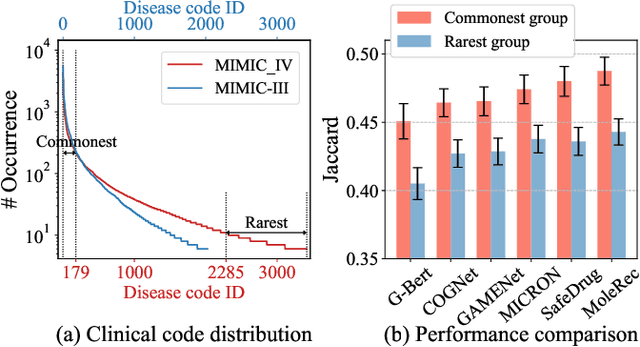

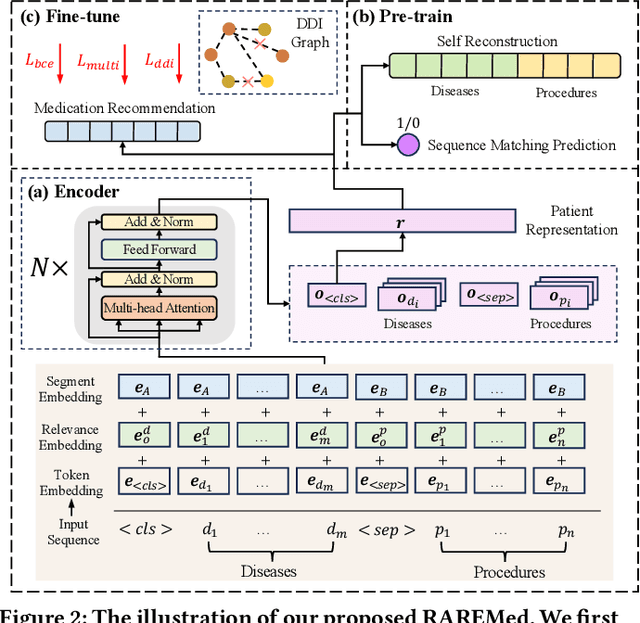

Abstract:Medication recommendation systems have gained significant attention in healthcare as a means of providing tailored and effective drug combinations based on patients' clinical information. However, existing approaches often suffer from fairness issues, as recommendations tend to be more accurate for patients with common diseases compared to those with rare conditions. In this paper, we propose a novel model called Robust and Accurate REcommendations for Medication (RAREMed), which leverages the pretrain-finetune learning paradigm to enhance accuracy for rare diseases. RAREMed employs a transformer encoder with a unified input sequence approach to capture complex relationships among disease and procedure codes. Additionally, it introduces two self-supervised pre-training tasks, namely Sequence Matching Prediction (SMP) and Self Reconstruction (SR), to learn specialized medication needs and interrelations among clinical codes. Experimental results on two real-world datasets demonstrate that RAREMed provides accurate drug sets for both rare and common disease patients, thereby mitigating unfairness in medication recommendation systems.
Soft Language Clustering for Multilingual Model Pre-training
Jun 13, 2023
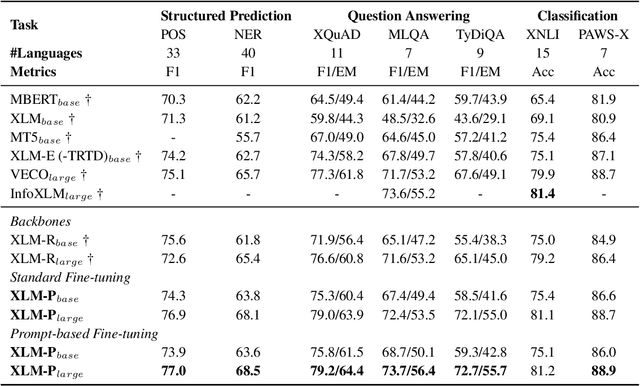
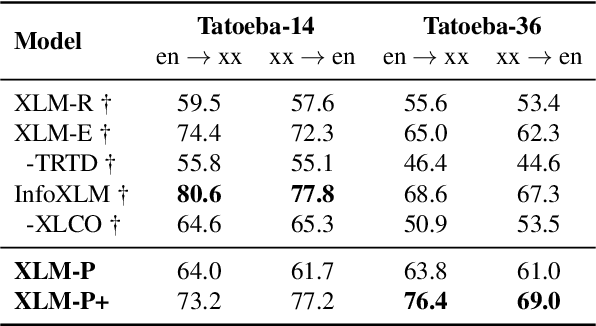
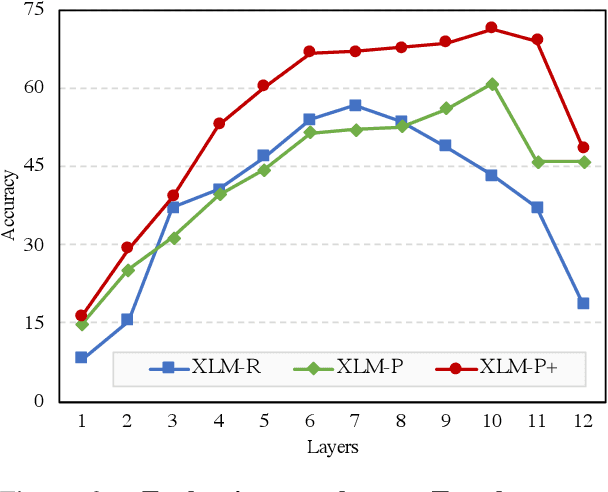
Abstract:Multilingual pre-trained language models have demonstrated impressive (zero-shot) cross-lingual transfer abilities, however, their performance is hindered when the target language has distant typology from source languages or when pre-training data is limited in size. In this paper, we propose XLM-P, which contextually retrieves prompts as flexible guidance for encoding instances conditionally. Our XLM-P enables (1) lightweight modeling of language-invariant and language-specific knowledge across languages, and (2) easy integration with other multilingual pre-training methods. On the tasks of XTREME including text classification, sequence labeling, question answering, and sentence retrieval, both base- and large-size language models pre-trained with our proposed method exhibit consistent performance improvement. Furthermore, it provides substantial advantages for low-resource languages in unsupervised sentence retrieval and for target languages that differ greatly from the source language in cross-lingual transfer.
TranSFormer: Slow-Fast Transformer for Machine Translation
May 26, 2023



Abstract:Learning multiscale Transformer models has been evidenced as a viable approach to augmenting machine translation systems. Prior research has primarily focused on treating subwords as basic units in developing such systems. However, the incorporation of fine-grained character-level features into multiscale Transformer has not yet been explored. In this work, we present a \textbf{S}low-\textbf{F}ast two-stream learning model, referred to as Tran\textbf{SF}ormer, which utilizes a ``slow'' branch to deal with subword sequences and a ``fast'' branch to deal with longer character sequences. This model is efficient since the fast branch is very lightweight by reducing the model width, and yet provides useful fine-grained features for the slow branch. Our TranSFormer shows consistent BLEU improvements (larger than 1 BLEU point) on several machine translation benchmarks.
Learning Multiscale Transformer Models for Sequence Generation
Jun 19, 2022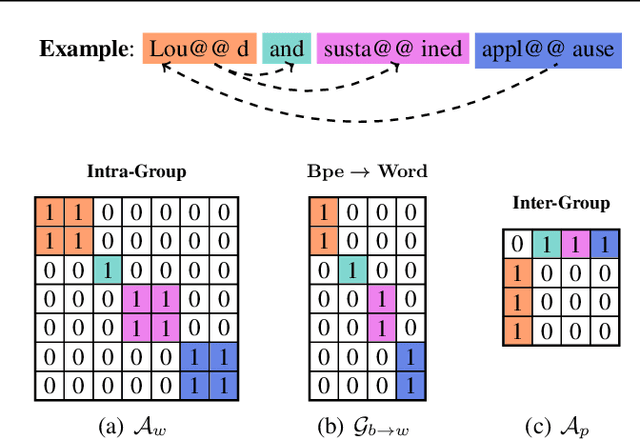

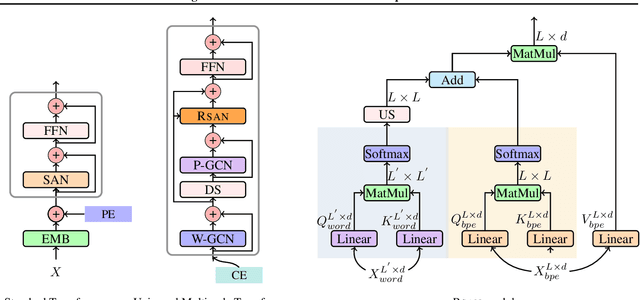
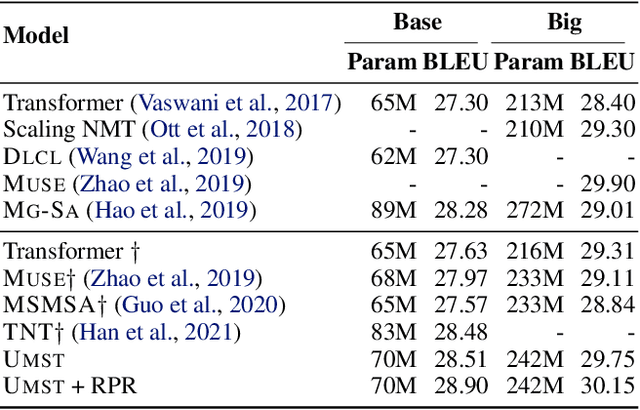
Abstract:Multiscale feature hierarchies have been witnessed the success in the computer vision area. This further motivates researchers to design multiscale Transformer for natural language processing, mostly based on the self-attention mechanism. For example, restricting the receptive field across heads or extracting local fine-grained features via convolutions. However, most of existing works directly modeled local features but ignored the word-boundary information. This results in redundant and ambiguous attention distributions, which lacks of interpretability. In this work, we define those scales in different linguistic units, including sub-words, words and phrases. We built a multiscale Transformer model by establishing relationships among scales based on word-boundary information and phrase-level prior knowledge. The proposed \textbf{U}niversal \textbf{M}ulti\textbf{S}cale \textbf{T}ransformer, namely \textsc{Umst}, was evaluated on two sequence generation tasks. Notably, it yielded consistent performance gains over the strong baseline on several test sets without sacrificing the efficiency.
ODE Transformer: An Ordinary Differential Equation-Inspired Model for Sequence Generation
Mar 17, 2022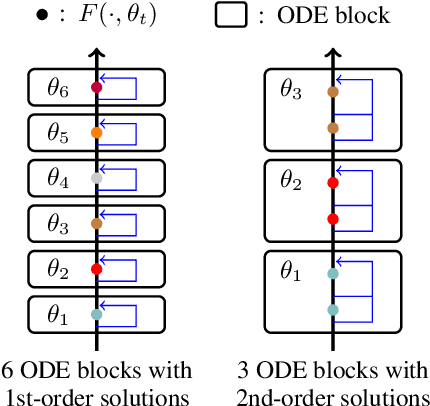
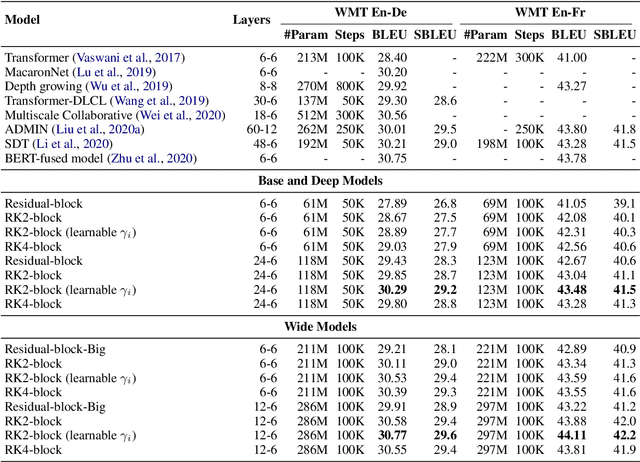
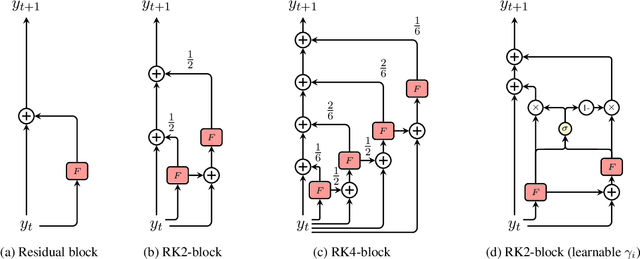
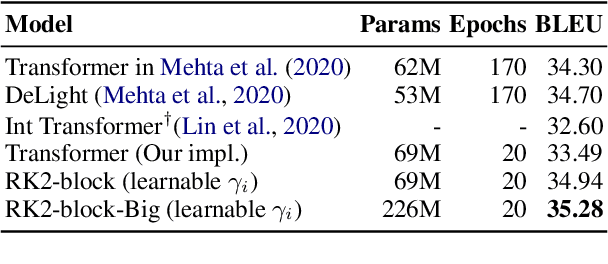
Abstract:Residual networks are an Euler discretization of solutions to Ordinary Differential Equations (ODE). This paper explores a deeper relationship between Transformer and numerical ODE methods. We first show that a residual block of layers in Transformer can be described as a higher-order solution to ODE. Inspired by this, we design a new architecture, {\it ODE Transformer}, which is analogous to the Runge-Kutta method that is well motivated in ODE. As a natural extension to Transformer, ODE Transformer is easy to implement and efficient to use. Experimental results on the large-scale machine translation, abstractive summarization, and grammar error correction tasks demonstrate the high genericity of ODE Transformer. It can gain large improvements in model performance over strong baselines (e.g., 30.77 and 44.11 BLEU scores on the WMT'14 English-German and English-French benchmarks) at a slight cost in inference efficiency.
The NiuTrans Machine Translation Systems for WMT21
Sep 22, 2021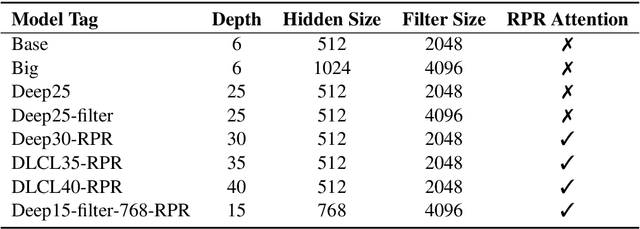
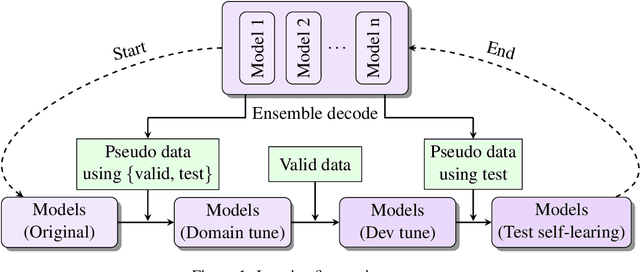
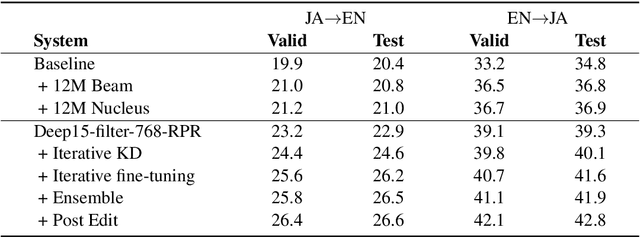
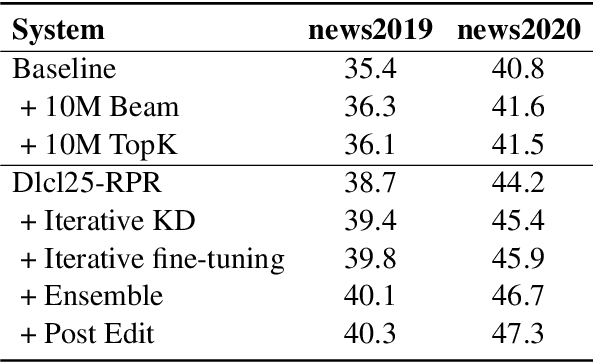
Abstract:This paper describes NiuTrans neural machine translation systems of the WMT 2021 news translation tasks. We made submissions to 9 language directions, including English$\leftrightarrow$$\{$Chinese, Japanese, Russian, Icelandic$\}$ and English$\rightarrow$Hausa tasks. Our primary systems are built on several effective variants of Transformer, e.g., Transformer-DLCL, ODE-Transformer. We also utilize back-translation, knowledge distillation, post-ensemble, and iterative fine-tuning techniques to enhance the model performance further.
 Add to Chrome
Add to Chrome Add to Firefox
Add to Firefox Add to Edge
Add to Edge